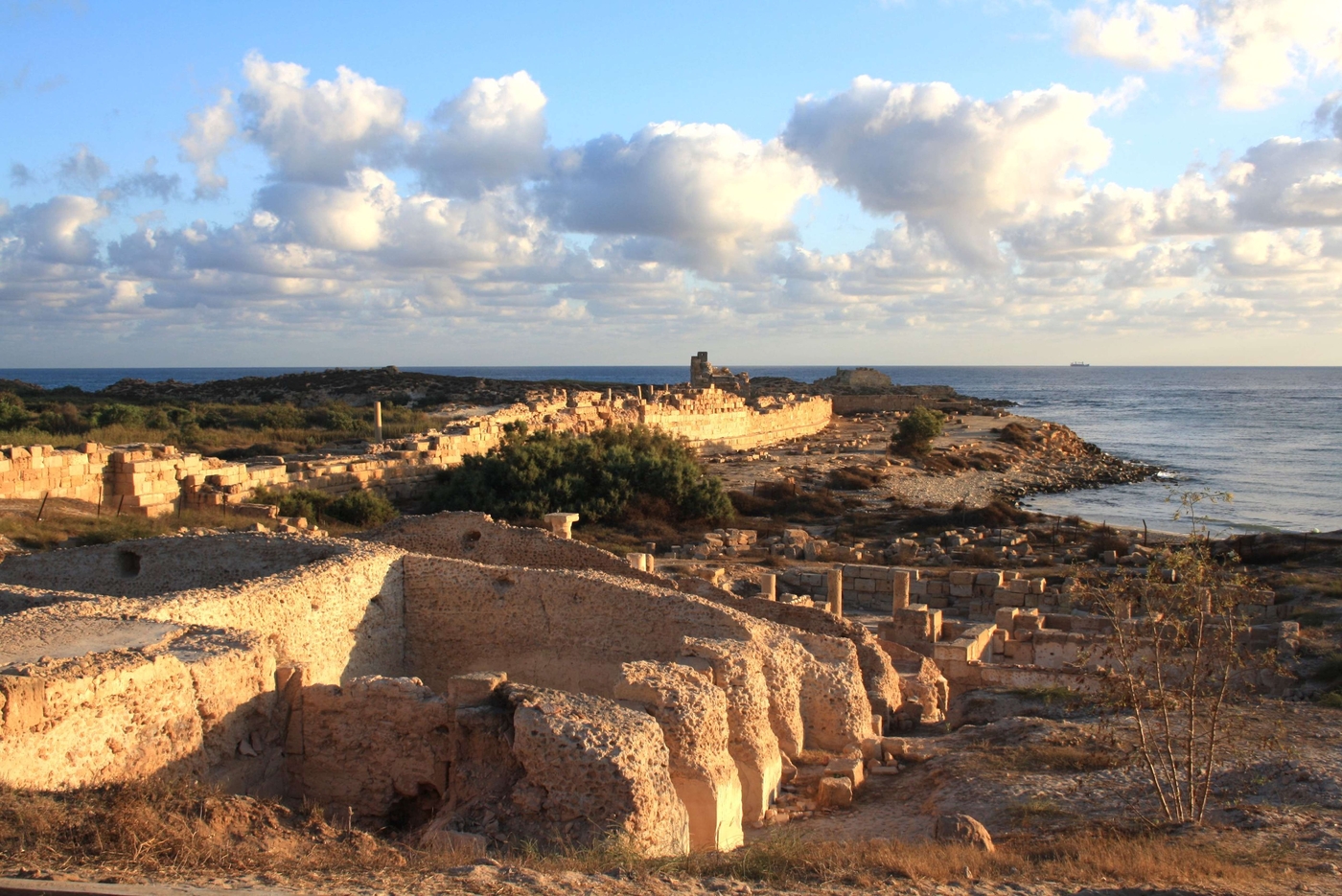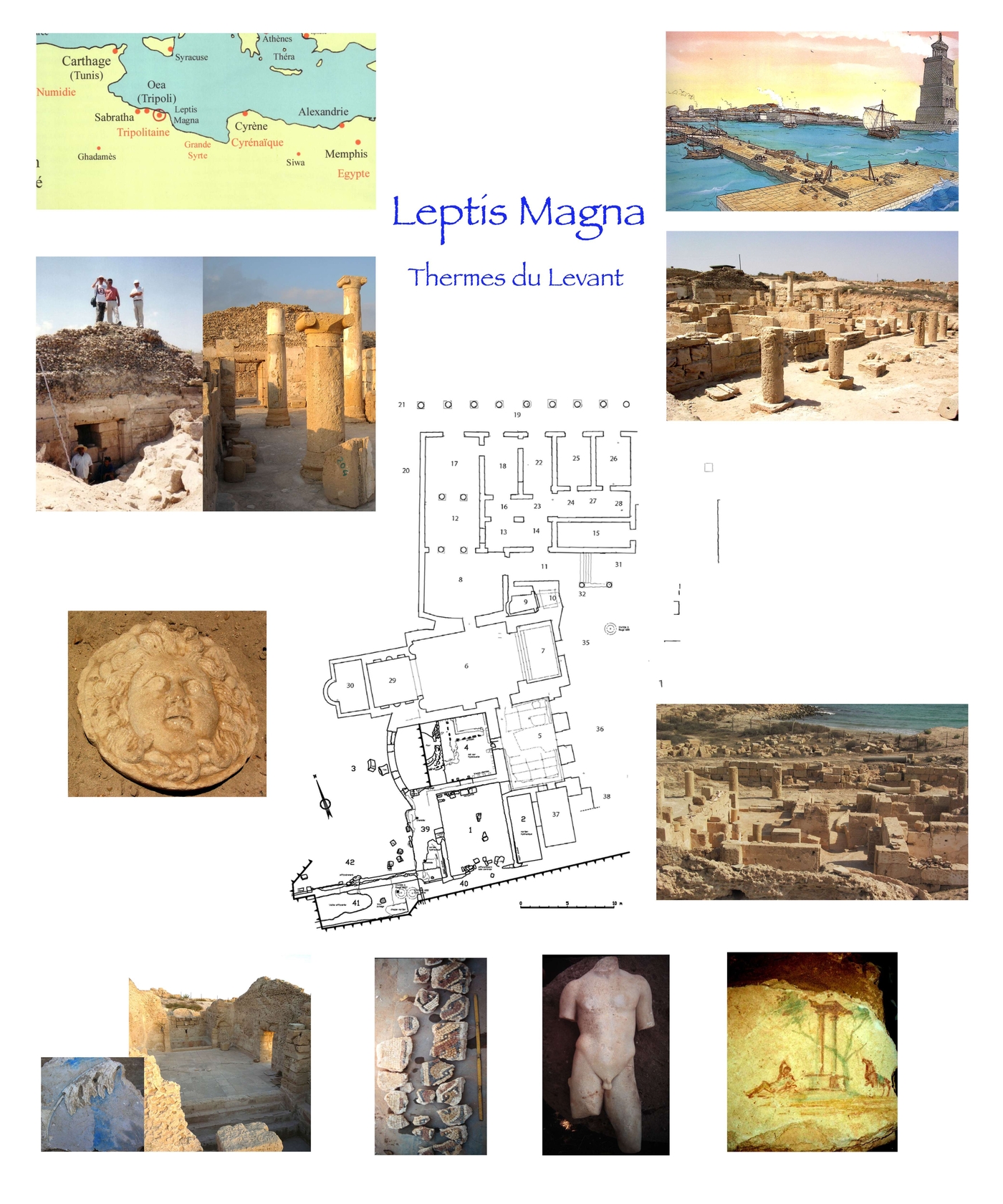Leptis Magna
Some 110 km to the east of Tripoli, the ancient city of Leptis Magna was one of three large cities in the historical Tripolitania region. A Punic foundation, its brilliance made it the Rome of Africa. Unlike Cyrene, which conserved its Greek-style monumental architecture, Leptis lost all trace of its Punic past.

The French archaeological mission has been working in the Tripolitania region for more than thirty years. From 1911, Italian archaeologists in Leptis Magna uncovered most of the main buildings, including the Augustan theatre, the amphitheatre, the Hadrianic great baths, the forum and the basilica of Septimus Severus ‒ the great emperor who was born in the city.
The thermal baths of the Levant
The underwater excavation of the ancient port was begun on the initiative of André Laronde. The discovery of an advanced protective section, suggesting probable eastwards urbanisation, led to a test excavation in 1994 that revealed the thermal baths of the Levant. The baths had two connected sets of buildings over an area of 1,500 m². A porticoed path followed the shoreline and led to several rooms, including the colonnaded vestibule and probably a commercial and craftworking area.
The baths follow the standard architectural arrangement of a Roman bath with a large cold room (frigidarium) with two pools, two warm rooms (tepidarium) and a hot room (caldarium) containing baths.
Interrupted occupation
Although the oldest levels of the building date back to the Republican and Augustan periods, strictly speaking the baths were only used from the 2nd century CE. The building was extensively modernised under Septimus Severus (193-211); the walls and floors were covered with marble during this period. The thermal baths went out of use in the second half of the 3rd century – perhaps following an earthquake – and then the site was redeveloped in the late 3rd - 4th centuries, when several rooms were converted into a flour mill, bakery, and then makeshift habitats. The silting of the baths began in the 5th century and continued into the 7th century, when they were abandoned.
This precise knowledge gained from the joint study of the stratigraphy, the building and pottery artefacts allowed the Mission to adapt the baths prior to their public display.
The research team
The French archaeology mission in Libya was founded in 1976 by François Chamoux, and resumed in 1981 by André Laronde. Following his death, Vincent Michel took over the mission in 2011. Initially focused on the Greek-Roman period, it has constantly expanded its field of research into Late Antiquity (Erythron-Latrun) and Prehistory (Abu Tamsa). The complex security situation has shifted the focus to strengthening cooperation between the French and Libyan teams, with training in archaeology, archaeometry and conservation techniques, and post-excavation work.
Supported by the French Ministry for Europe and Foreign Affairs on the advice of the Excavations Board, the mission works to combat the theft and illicit trafficking of cultural property, which is one of the priorities of the French Ministry of Culture.
Learn more:
- The webpage of the Research centre on Ancient Libya
- The Mission on the website of the French Ministry for Europe and Foreign Affairs




